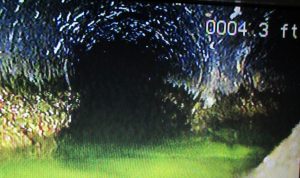Suffolk County Septic Systems
As stated in our recent blog “Suffolk County Commercial Cesspools Will No Longer Be Grandfathered-in During Redevelopment”, commercial and industrial facilities will now have to comply with new septic tank regulations. If there are any expansions or changes to a facility that will affect the current septic system, a Suffolk County approved advanced nitrogen removal system must be installed. Suffolk County will not accept any system that is not on the County’s list of approved systems of nitrogen removing septic tanks.
The Problem
The big push towards these new nitrogen removing septic systems is a reactive response to the increase in nitrogen levels in our waters. Excessive nitrogen from septic tanks leaks into our bodies of water, including the Great South Bay and the Long Island Sound. Nitrogen feeds algal blooms, which is a main cause of the brown tide found commonly found in our waters. The dark colored water resulting from the brown tide inhibits sunlight from reaching plant life in water, which also decreases the oxygen levels in the water. With this disruption in chemical composition, it is not only causing the plant and wildlife to die, but is also affecting our groundwater. Since Long Island’s drinking water comes from our groundwater, protecting our environmental health is tied closely to human health on the Island.
The Solution: Nitrogen Removing Septic Tanks
Septic tanks are intended to better manage sewage being discharged from buildings, compared to conventional leaching structures, such as cesspools. The chamber within a septic tank is intended to promote the growth of bacteria that work to break down the sewage. The septic tank allows for the separation of solids from the waste water so that only the water itself is allowed to flow into the cesspools, while the solids are retained for decomposition and eventual removal. This prevents the opening of the cesspools that are intended to leach out water to the subsurface from becoming clogged and failing. It also helps to keep high nitrogen content material and other contaminants from entering the nearby groundwater and surface water bodies, which is what the County is after with the Sanitary Code amendments.
The biggest contributor to Long Island’s increase in environmental nitrogen levels is urine. Nitrogen removing septic systems turn the ammonia from urine into nitrate. The bacteria in the system strips the oxygen away from the nitrate, ending up with just nitrogen gas. The nitrogen gas then rises into the air, which keeps it from seeping into the groundwater.
Suffolk County Wastewater Improvement Initiative
Suffolk County has started a Septic Improvement Program which provides funding for residential water quality improvement projects. More information on the program’s requirements and potential funding opportunities can be found here.
Environmental Engineering for Septic Systems
Walden Environmental Engineering has experience with permitting, sampling, designing and site planning services with regards to commercial, industrial, and municipal wastewater systems. For more information about the new regulations involving your septic systems, please call us at 516-624-7200. And check our website for more insight into environmental regulations that could affect you!



